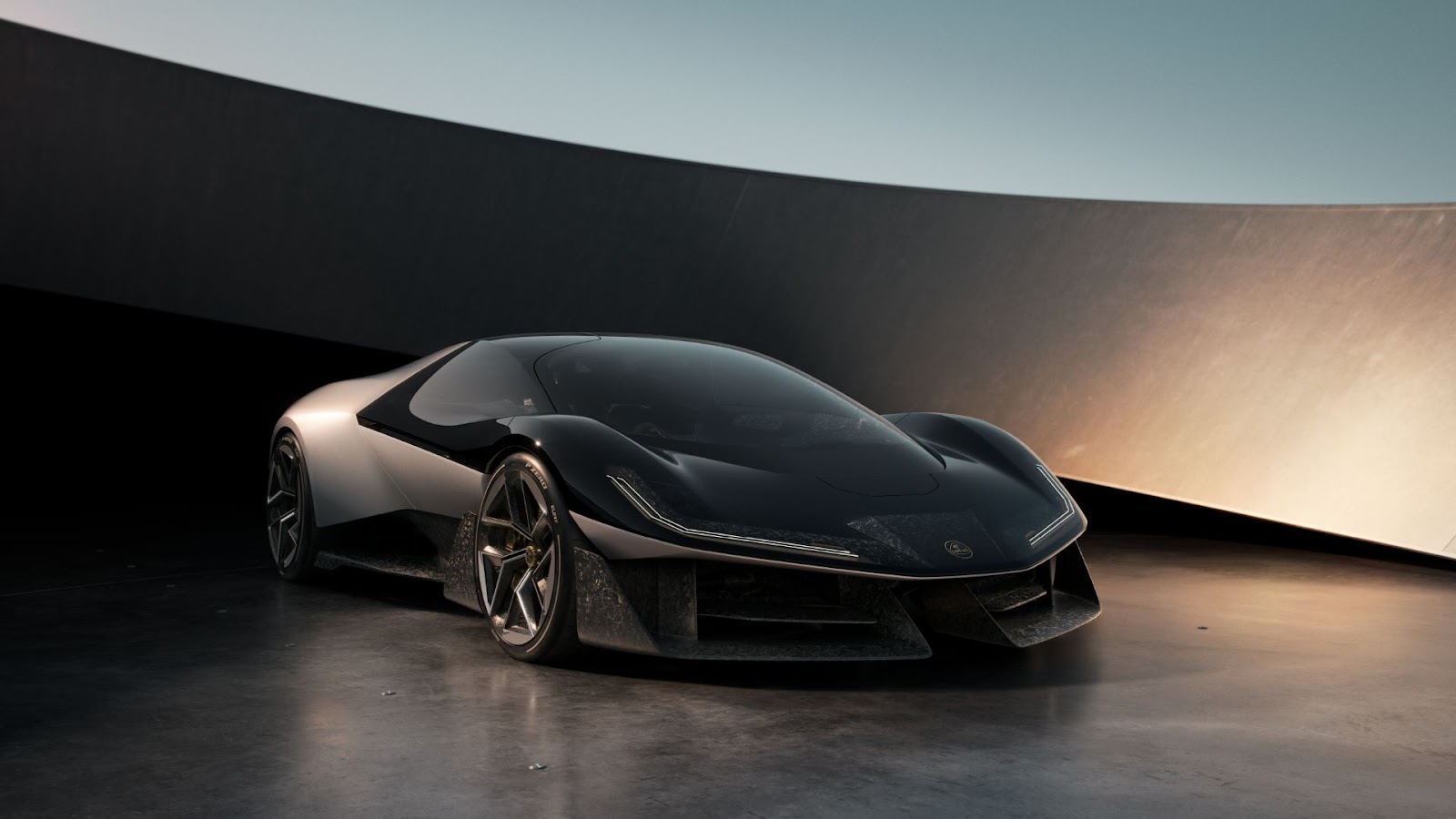Lotus Theory 1 concept signposts future of electric sports cars
The wraps are off a radical new electric concept car from Lotus, designed to showcase the ‘future of intelligent performance vehicles’. The Lotus Theory 1 demonstrates the British company’s new design manifesto – and reveals new technological innovations. From robotic textiles and haptic feedback on the inside, to recycled materials for its exterior, the Theory [...]


The wraps are off a radical new electric concept car from Lotus, designed to showcase the ‘future of intelligent performance vehicles’.
The Lotus Theory 1 demonstrates the British company’s new design manifesto – and reveals new technological innovations.
From robotic textiles and haptic feedback on the inside, to recycled materials for its exterior, the Theory 1 feels a world away from traditional notions of a Lotus sports car.
However, Lotus has made it clear the Theory 1 will put the driver at the heart of the experience, this time with 1,000hp of electric power at their disposal.
Creating a new Lotus DNA
Lotus set itself the goal of using only 10 main materials in the construction of the Theory 1 (compared to approximately 100 in most road cars). The vehicle’s body is made from recycled chopped carbon fibre and cellulose-based glass fibre, along with recycled glass.
The big benefit of these materials is to save weight. Even with a 70kWh battery pack and all-wheel drive, Lotus quotes a kerb weight of less than 1,600kg for the Theory 1.
Although clearly not a featherweight in terms of Lotus history, this makes the Theory 1 much lighter than many EVs.
It also translates into serious performance, with 0-62mph in less than 2.5 seconds and a potential top speed of nearly 200mph.
‘Lotuswear’ inside the Theory 1
A new Lotus design manifesto will incorporate ‘DNA’ into its forthcoming cars. Standing for ‘Digital, Natural and Analogue’, these guiding principles are intended to keep the driver fully involved in the experience.
Inside the Theory 1, a ‘Lotuswear’ system can communicate directly with the occupants. Pods on the seats inflate automatically when more lateral support is needed, while the steering wheel can give haptic prompts when the driver should start turning.
Lightweight robotic textiles, developed in collaboration with MotorSkins, are used for the first time in an automotive setting.
Lotuswear also extends to the 3D-printed lattice-style headrests, which reduce weight while ensuring comfort and safety. A KEF binaural audio system is integrated into the headrests, too.
Lotus innovation inside and out
Further innovations in the Theory 1 include LEDs mounted on the front suspension modules, which can be seen from the interior. These illuminate red or green, alerting the driver to the need for braking or acceleration.
Laser lights on the dashboard also work with the inflatable seat bolsters to indicate left or right corners.
Active and passive aerodynamics are incorporated into the car’s bodywork, along with a contoured underbody and motorsport-style sidepods to guide airflow effectively.
As a technological tribute to the legendary Lotus 49 Formula One car, the motor and battery act as stressed members, reducing weight and complexity. The Theory 1’s rear spoiler also mounts directly onto its electric motor.
An immersive driving experience
Ben Payne, vice president of design at Lotus Group, said: “With Theory 1, we’ve built on everything Lotus has achieved so far in its 76-year history, to push the boundaries for what it means to drive a performance vehicle. We wanted to demonstrate that you don’t need to compromise – with both digital and analogue capabilities working harmoniously in the future car.
“In doing this, we are able to set a new benchmark for raw emotion, functionality and connection, bringing drivers the best possible immersive driving experience.”
Despite its long history, Lotus has created relatively few concept cars. It makes the unveiling of the Theory 1 even more interesting, particularly as the brand pivots towards total electrification.
Sadly, the Theory 1 is not destined for production, but many of the innovations seen here will filter into future Lotus models over the coming years.
• John Redfern writes for Motoring Research



